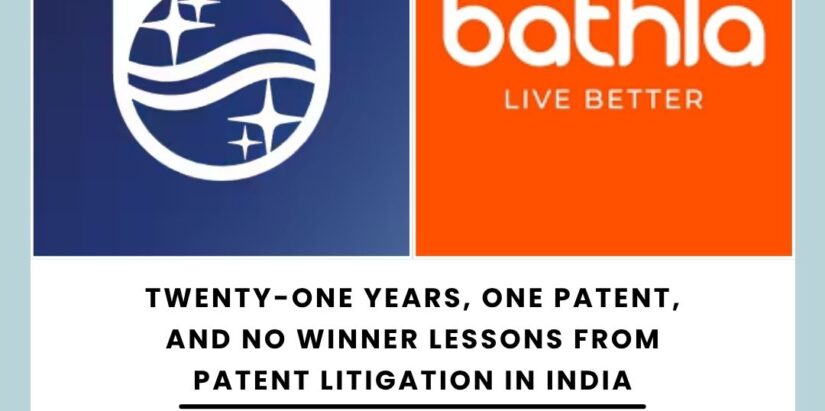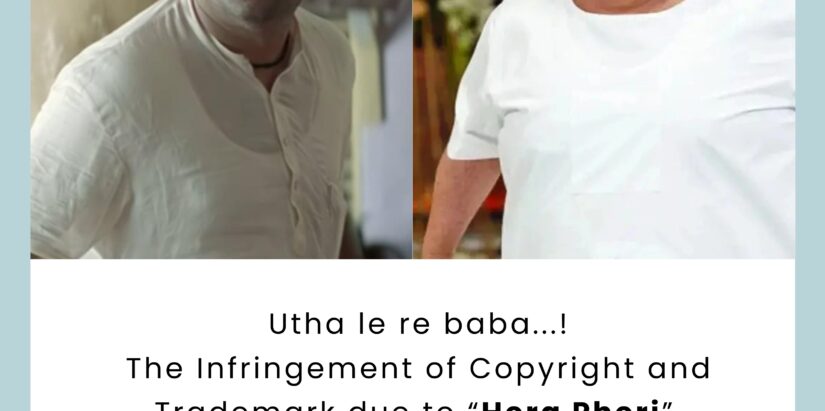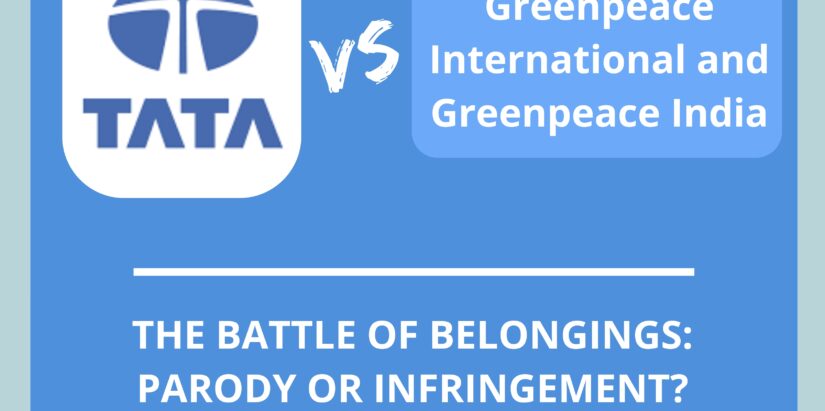PHILLIPS V/s. BATHLA (CS(COMM) 533/2018 & I.A. 19406/2022)
The Indian Judicial System has very lovingly always been known with the phrase ‘Tarikh pe Tarikh, Tarikh pe Tarikh!’ owing to the delays in disposing off matters. This is not just limited to traditional cases, but also extends to litigation matters in intellectual property.
This particular case extends to a Patent Case which went on for twenty-one years, where one patent became the subject matter, yet no one wins the case.
The 2000s saw a popularity of the Video Compact Disc (VCDs), which were a highlight of home entertainment. Philips invented one such VCD and in 2004, believed it had caught someone using its patented technology without permission.
What started in 2004, has finally ended in October 2025, long after VCDs vanished, and the patent itself had long gone. This case is not just about infringement and innovation, but also about how time itself can sometimes be the harshest verdict.
The Background: When Technology Was Round and Silver
Philips, the Dutch electronics giant, held Indian Patent No. 175971 — titled “Digital Transmission System.” It covered an ingenious method of compressing and transmitting digital audio — the backbone of what once powered VCDs.
Back in 2001, Philips noticed that several Indian manufacturers were producing VCDs — shiny discs filled with songs and movies — that, according to Philips, used its patented system. Among them was Mr. M. Bathla, a manufacturer from Delhi, whose company replicated and distributed these discs.
Philips approached Bathla politely at first — offering a license, even specifying a modest royalty of $0.03 per disc. Letters were exchanged, meetings attempted, and promises floated. But no deal ever materialised.
Due to this, Phillips finally decided to institute a Plaint in the Hon’ble Delhi High Court in 2004. They claimed unauthorised use of Philips’s patented technology. Bathla took a stand, “we simply replicate discs, not transmit or process signals — and your patent doesn’t cover that.”
Proceedings
The lawsuit was framed in the early 2000s, when intellectual property litigation in India was still learning to stretch its procedural muscles. The issues were frames:
- Was Philips the rightful owner of the patent?
- Was the patent being infringed?
- Were there alternative technologies available?
- If infringement existed, what damages were due?
Over the next two decades, the case wound through adjournments, cross-examinations, expired patents, and shifting technological eras. The patent itself expired in 2010, but the case continued on. Evidence was debated, machines replaced, experts changed, and by the time judgment day arrived, the world had long moved on from optical discs.
The Judgment:
On 13 October 2025, Justice Mini Pushkarna of the Hon’ble Delhi High Court finally delivered a 108-page judgment, and with it, the final word on Philips’s claim.
The verdict: Suit dismissed.
Why? Because after all this time, specifically 21 years, Philips had failed to prove that Bathla’s VCD replication used the exact system described in the patent claims.
The Court observed that Philips’s evidence relied on general similarities rather than a meticulous claim-by-claim mapping. Instead of showing that each element of its patent was mirrored in the defendant’s process, Philips drew broad parallels, something which the Court refused to accept.
Moreover, the Phillips’ protected patent only covered a system of transmission and reception of data, and did not cover the mere act of copying or replicating discs. In light of this specific claim versus general actions, the Patent was not being infringed by Bathla. The Hon’ble Court noted that Bathla’s replication of the VCDs was duplication, and not digital transmission.
The Court also pointed out on Philips’s claim that its patent was standard-essential, an integral to Moving Pictures Experts Group (MPEG) and VCD technology.
Standard Essential Patents are those that protect an invention essential to the implementation of a particular technology standard. These standards are critical for ensuring safety, interoperability and compatibility of different products and services made available by various companies. Some examples include Wi-Fi, USB, etc.
Coming back, the Court however found no proof that Philips had declared their VCD patent as standard essential as such or followed any Fair, Reasonable, and Non-Discriminatory (FRAND) licensing norms.
Thus, after 21 years of litigation, Philips walked away with no injunction, no damages, a defunct patent, and a huge cheque in litigation costs.
When Justice Takes Its Time
The Philips vs Bathla goes beyond a corporate dispute; it is an essential parody on the price of delay.
The life of any Patent is 20 years from the date of application. However, the lawsuit to enforce the Patent took twenty-one years. By the time judgment arrived, the patent is gone, the technology obsolete, and the market transformed. At the end of the day, there remains nothing to be protected.
Patent suits in India often face this temporal tragedy. Between procedural backlogs, expert appointments, technical evidence, and endless adjournments, the clock keeps ticking — while the patent term does not pause.
By the time a verdict is rendered, injunctions lose meaning (the patent’s expired), damages become harder to calculate, and the commercial context evaporates entirely.
In this Philips case, VCDs had long been replaced by DVDs, and DVDs by streaming services. The entire industry that birthed the dispute had vanished and yet, the file still sat on the court’s docket.
The Broader Lesson: Law Must Keep Up with Innovation
The Delhi High Court’s reasoning was sound: evidence must meet the standard, claims must map precisely, and patents must be enforced properly. But the case’s larger message is sobering, justice delayed is not just justice denied, but in times like these, justice becomes irrelevant.
Just like in traditional circumstances, society moves forwards, but the law doesn’t; and in intellectual property cases, Innovation and Technology is moving faster than ever but the law is much slower.
For inventors, it’s a warning and a lesson. Merely having a strong invention patented isn’t enough. The rights in the patent must also be enforced with speed, precision, and preparedness.
For policymakers, it’s a call to introspection: can a twenty-year case run protect a twenty-year right?
Conclusion
When Philips filed that suit, the world still listened to music on discs. When the Delhi High Court decided it, people were streaming on Spotify.
In between stood two decades of procedural wrangling, evidence ageing, technology dying, and justice taking its time.
The Philips v. Bathla judgment reminds us that a patent, like time, is perishable, and unless our system evolves to move with innovation, we may keep winning arguments but losing relevance.




